Last Updated on December 15, 2023 by teamobn
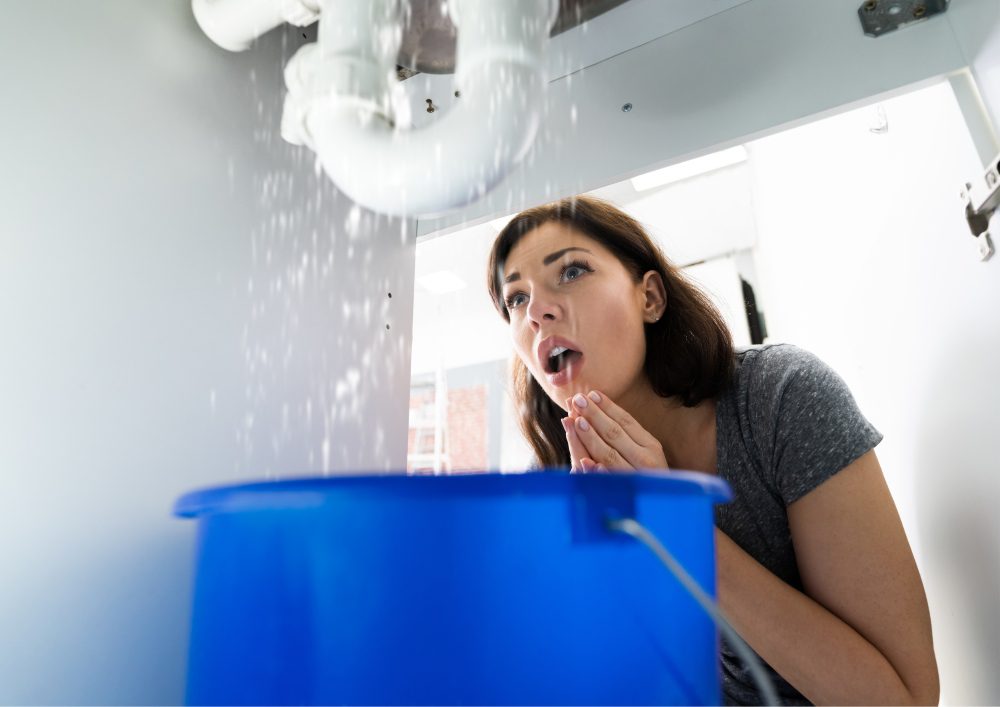
Taking care of your home plumbing can save you money and stress. Leaky faucets, blocked drains, and faulty water heaters are common problems. But you don’t need to be a pro to fix them.
This article will guide you through common repairs and maintenance tasks for your home plumbing system.
Contents
Basic Tools You Need
Taking care of your home plumbing doesn’t have to be a daunting task. The right tools can make all the difference. Here’s a rundown of essential tools and how to pick them for your plumbing projects.
Adjustable Wrench
An adjustable wrench is a must-have for any home plumbing repair. It can tighten and loosen various sizes of nuts and bolts. Look for a wrench with a good grip and adjustable jaw. This tool will be your best friend for jobs like fixing leaky faucets.
Pipe Wrench
A pipe wrench is crucial for larger tasks in your home plumbing. It grips round objects like pipes. This tool is bulky but extremely useful. Ensure you have at least two: one to hold the pipe and one to turn it.
Plunger
You can’t talk about home plumbing without mentioning a plunger. It’s essential for unclogging toilets and drains. Get a good-quality rubber plunger. One with a flange is best for toilets, while a cup type is better for sinks.
Plumber’s Tape
Also called Teflon tape, this helps seal pipe threads of your home plumbing. It’s used to prevent leaks in plumbing joints. Rolling this in your toolkit can save you from a watery mess.
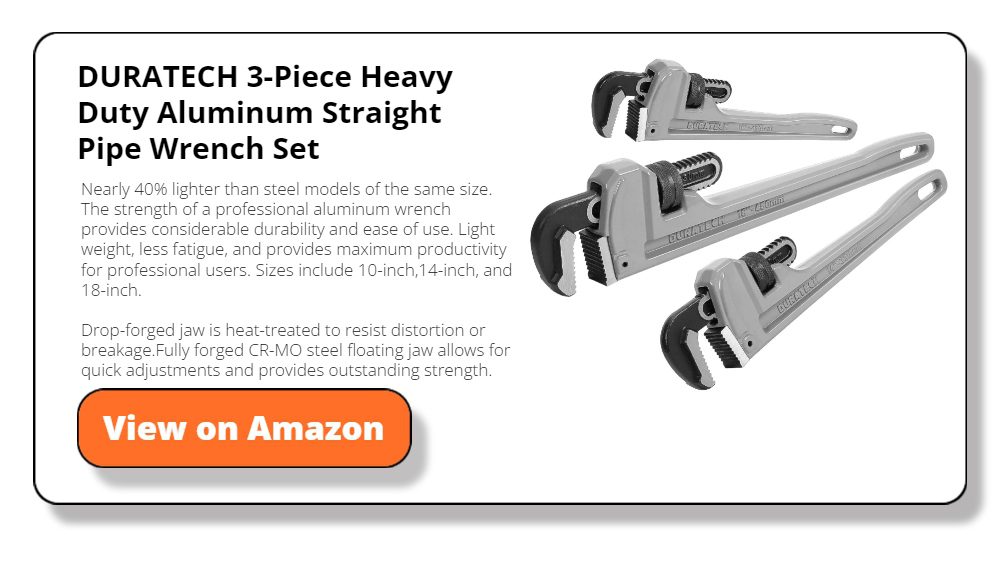
Screwdrivers
Screwdrivers come in various types and sizes. You’ll need both flat-head and Phillips for different jobs on your home plumbing. They’re used for tightening screws in fixtures or removing drain covers.
Pipe Cutter
A pipe cutter gives a clean cut to your home plumbing pipes, making it easier to join them. You may need both small and large sizes. Remember, a clean cut can save you time and prevent leaks later.
Tape Measure
Precise measurements are vital in plumbing work. A tape measure can help you size pipes or determine your needed material.
Bucket
While not traditionally a ” tool, ” a bucket is crucial for your home plumbing. It catches water during tasks like disassembling pipes or fixtures. This keeps your workspace clean and prevents water damage.
Plumber’s Putty
The putty is a sealing compound used around drains and faucets of your home plumbing. It’s easy to mold and helps prevent water leaks. Keep some handy for quick fixes.
Hose Clamps
These are used to tighten hoses and prevent leaks to your home plumbing. They come in various sizes, so pick a few to have options.
Each tool has its job in the world of home plumbing. Some may seem more important than others, but each adds value to your toolkit. These tools will prepare you for most common plumbing repairs and maintenance tasks.
Understanding Your Home Plumbing System

Before diving into any repair or maintenance task of your home plumbing, it’s crucial to understand how your home plumbing system works. This knowledge will help you diagnose problems and fix them efficiently. This section will guide you through the key components of a typical home plumbing system.
Water Supply System
This is the lifeline of your home plumbing. It brings fresh water into your house. You’ll find a main shut-off valve near where the water line enters your home. Know its location for emergencies like leaks or bursts.
Drain-Waste-Vent System
This system removes waste and water from your home plumbing. It consists of a network of pipes that lead to the sewer or a septic tank. Understanding how this system works can help you tackle clogs and blockages.
Fixtures and Appliances
These are what most people interact with daily in all home plumbing systems. Sinks, showers, and toilets are fixtures. Water heaters and dishwashers are appliances. Each has its pipes connecting it to the water supply and drain-waste-vent systems.
Pipe Materials
Pipes for any home plumbing system can be made from various materials like copper, PVC, or galvanized steel. Each material has its pros and cons. Knowing the type of pipes in your home can guide you on what repairs can be done and how.
Water Pressure
Proper water pressure is important for your home plumbing to function well. Too high or too low can cause issues. Learning how to measure and adjust it can prevent problems like leaks or poor water flow.
Valves and Joints
You’ll encounter several types of valves and joints in your home plumbing system. Some are for stopping the flow, others for directing it. Knowing their types and functions can save you time during repairs.
Understanding your home plumbing system may seem complex, but it’s worth it. Once you get the basics down, you’ll find it easier to handle repairs and maintenance. And you’ll save both time and money in the long run. Knowing what each part does and how they connect makes any plumbing task less intimidating.
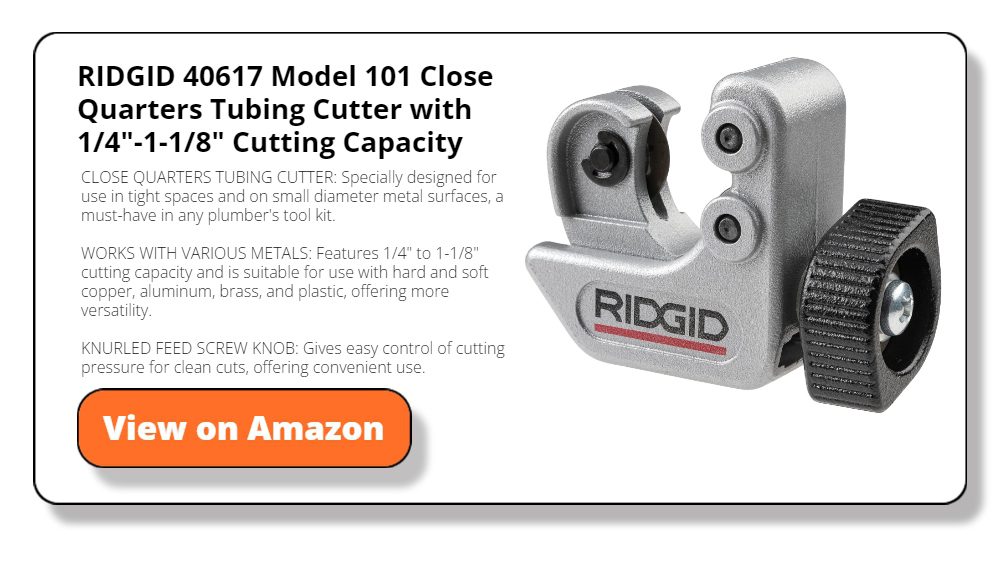
Common Repairs
Once you know your home plumbing system and have your tools ready, it’s time to tackle common repairs. These are issues almost every homeowner faces. In this section, we’ll guide you through some typical problems and how to fix them. First up is the ever-annoying leaky faucet.
Fixing a Leaky Faucet
A leaking faucet can bring up multiple problems apart from a rising water bill. The leaks are also a headache to see and hear daily, ruining your mood or focus.
Identify the Leak
Knowing the source of the faucet’s leak is the first step. The leak could come from a faulty handle or valve around the faucet base. Knowing the source helps you decide what parts you’ll need.
Turn Off the Water Supply
Turn off the water supply before disassembling the faucet. There’s usually a small knob under the sink. Turn it off to prevent a mini flood in your bathroom or kitchen.
Take Apart the Faucet
Use your adjustable wrench and possibly a screwdriver. Keep track of all the parts and their order to make reassembling your faucet much easier.
Replace Faulty Parts
Inspect the parts for any wear and tear. O-rings, washers, or even the whole cartridge might need replacing. Take the old parts to the store to ensure you get exact replacements.
Reassemble and Test
After replacing the faulty parts, put the faucet back together. Turn the water supply back on and test to see if you’ve solved the problem.
Check for Further Leaks
Sometimes, you’ll fix one leak only to find another. Make sure to test thoroughly to ensure you’ve completely solved the problem.
Unclogging Drains
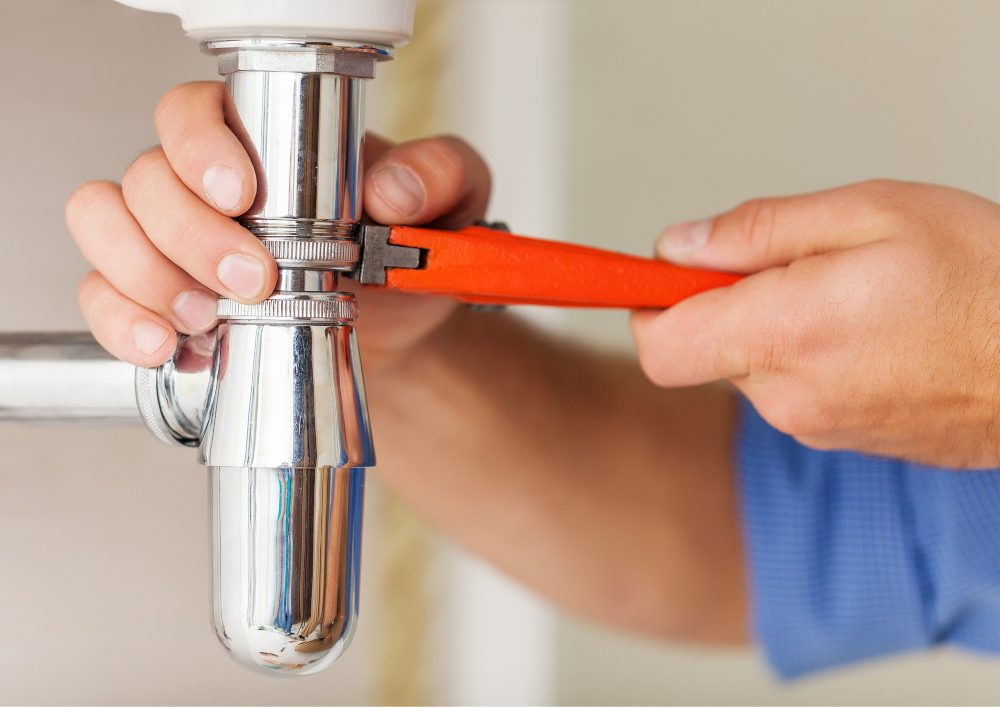
Clogged drains are a common issue in many homes. A blocked drain, whether the kitchen sink or the bathroom tub, is a hassle. But fear not; this guide will help you clear that clog quickly.
Identify the Clog Location
First, figure out where the clog is. Is it near the surface, or is it deep within the drain? Knowing this helps you pick the best tool for the job.
Prepare the Area
Place a bucket under the sink to catch any water or debris. This keeps your work area clean and helps prevent water damage to your home.
Use a Plunger
A plunger is often the first tool to use for unclogging drains. Fill the sink or tub with a small amount of water. Then, use the plunger to create a seal and push and pull rapidly. It can often dislodge minor clogs.
Chemical Drain Cleaners
For tougher clogs, you might consider using a chemical drain cleaner. Follow the instructions carefully and make sure the room is well-ventilated. Chemicals can be harsh and should be your last option.
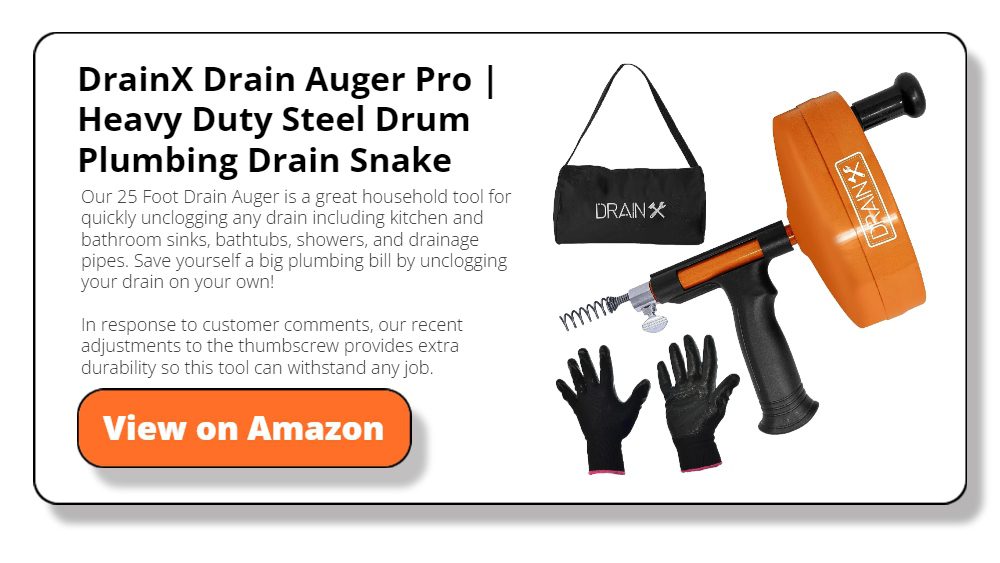
Use a Plumber’s Snake
For really stubborn clogs, a plumber’s snake can be very effective. This tool can break up clogs deep within the pipe. Insert the end into the drain and turn it to break up the blockage.
Test and Clean
Once you’ve cleared the clog, run hot water to ensure the drain is fully open. Clean your tools and the area to prevent any future clogs.
Toilet Troubleshooting
Toilet problems are both common and inconvenient. Issues can vary from a running toilet to one that won’t flush. This guide will help you tackle typical toilet troubles without calling a plumber.
Running Toilet
A running toilet can waste a lot of water. Often, the problem is a worn-out flapper. Open the tank, inspect the flapper, and replace it if needed. Ensure the chain connecting the flapper to the flush handle isn’t too short or long.
Clogged Toilet
A plunger is your first tool for this issue. Place the plunger over the hole, push down, and pull up vigorously several times. If that fails, use a plumber’s snake to break up the clog.
Weak Flush
If your toilet isn’t flushing with enough force, the problem might be with the water level in the tank. Check if the water reaches the fill line. Adjust the float to raise the water level if needed.
Leaking Base
If you notice water around the toilet’s base, you might leak. Turn off the water supply and tighten the bolts at the base. If the problem continues, you might need to replace the wax ring seal.
Maintenance Tips
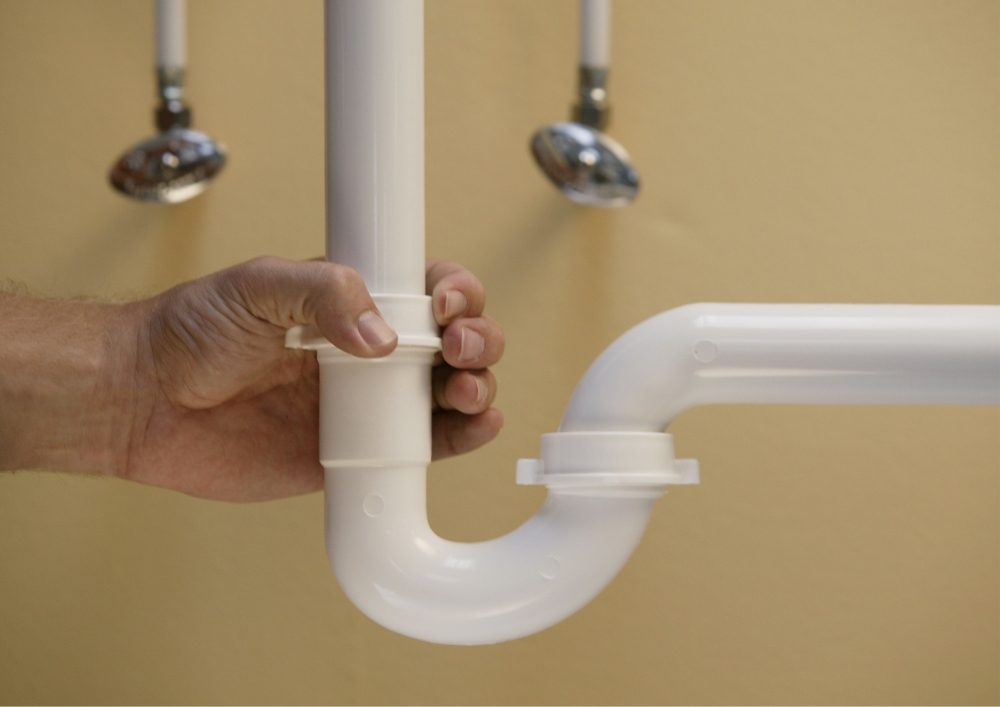
A well-maintained plumbing system is less likely to have problems. Regular upkeep can prevent bigger issues and save you money. This section will cover tips that will help you keep your plumbing system in top shape.
Regular Pipe Checks
Checking your pipes regularly can prevent leaks and other problems. Here’s how to go about it.
- Find Your Pipes: Know where all the water pipes in your home are located. This includes ones in basements or crawl spaces.
- Look for Leaks: Turn off all faucets and listen. If you hear water running, you might leak. Check pipes for any wet spots or rust.
- Check Insulation: If your pipes are exposed, ensure they are well-insulated. This can prevent freezing in winter.
- Examine Joints: Look at the joints to see if they appear tight and corrosion-free.
- Test Water Flow: Turn on faucets to see if water flows freely. Slow flow might mean there’s a clog or some other issue.
- Schedule Professional Checks: Have a professional check your plumbing at least once a year. They can spot issues you might miss.
Water Heater Care
Your water heater is key to a comfortable home. Take these steps to keep it running smoothly.
- Know Your Unit: First, know what type of water heater you have. Is it tankless, or does it have a tank? Gas or electric? This information helps when troubleshooting.
- Check Temperature: Most heaters are set too high. A good temperature is around 120 degrees Fahrenheit. This saves energy and prevents burns.
- Inspect for Leaks: Look around the base for any water. Leaks are a sign of a problem that needs quick attention.
- Flush the Tank: Flushing out sediment once a year is crucial for tank-based heaters. Turn off the heater, drain the tank, and then refill it.
- Examine the Anode Rod: This rod prevents your tank from rusting. Check it once a year and replace it if needed.
- Professional Inspection: Like your pipes, your water heater should get a yearly check by a pro. They can find and fix issues before they turn into big problems.
Cleaning Drains and Traps
Keeping your drains and traps clean is essential for a smoothly running plumbing system. Follow these steps to keep everything flowing as it should.
- Identify Problem Areas: Know which drains in your home are most prone to clogs. These often include kitchen sinks and bathroom drains.
- Use a Drain Guard: Place a drain guard over kitchen and bathroom drains. It catches food particles, hair, and other debris.
- Bi-weekly Flushing: Every two weeks, flush your drains with hot water. This practice can break up any forming clogs.
- Chemical-Free Cleaners: For a deeper clean, use baking soda and vinegar. Pour them down the drain, wait 15 minutes, and flush with hot water.
- Clean P-Traps: The P-trap is the U-shaped pipe under the sink. Unscrew it, clean it out, and screw it back in place.
Checking Water Pressure
Proper water pressure is crucial for your plumbing system’s performance. Here’s how to keep it at the right level.
- Know the Baseline: First, determine your home plumbing baseline water pressure. You can use a pressure gauge for this.
- Check Faucets and Fixtures: If you notice low pressure at a single faucet, the issue is likely with that fixture. High pressure throughout the house means a more serious issue.
- Adjust Pressure Regulator: Some homes have a pressure regulator. Adjust this if your water pressure is consistently too high or low.
- Check for Leaks: Sometimes, low water pressure is due to a leak. Regularly inspect your home for any signs of leaking.
Seasonal Maintenance
Changes in the weather can affect your plumbing system. Here’s how to prepare for different seasons.
- Winterizing Pipes: Before winter comes, insulate exposed pipes. The insulation prevents them from freezing and bursting.
- Check Outdoor Faucets: Before winter, drain outdoor faucets and disconnect hoses.
- Spring Check: Come spring, inspect pipes for any damage caused by winter freezes. Also, turn outdoor faucets back on and check for leaks.
- Summer Care: In summer, your water usage usually goes up. Monitor your water bill to spot any sudden spikes that could mean a leak.
- Fall Drainage: Before fall, clean out gutters and downspouts. The practice helps prevent blockages that can cause water damage.
Emergency Prep
Knowing what to do in a plumbing emergency can save you time and money. Here are the key steps to prepare.
- Know Main Shut-Off: Know where your home plumbing main water shut-off valve is located. Turning this off stops all water flow in the house.
- Emergency Kit: Have a kit with basic plumbing tools. It should include a plunger, wrench, and pipe tape.
- Have a Plan: Know the quickest route to the shut-off valve and how to use the tools in your kit.
- Quick Fixes: Learn some quick fixes for common issues like a leaky faucet or clogged drain. These can be temporary solutions until a pro can take a look.
- Contact Info: Keep the contact info for a reliable plumber handy. In a real emergency, you won’t have time to search for one.
When to Call a Professional
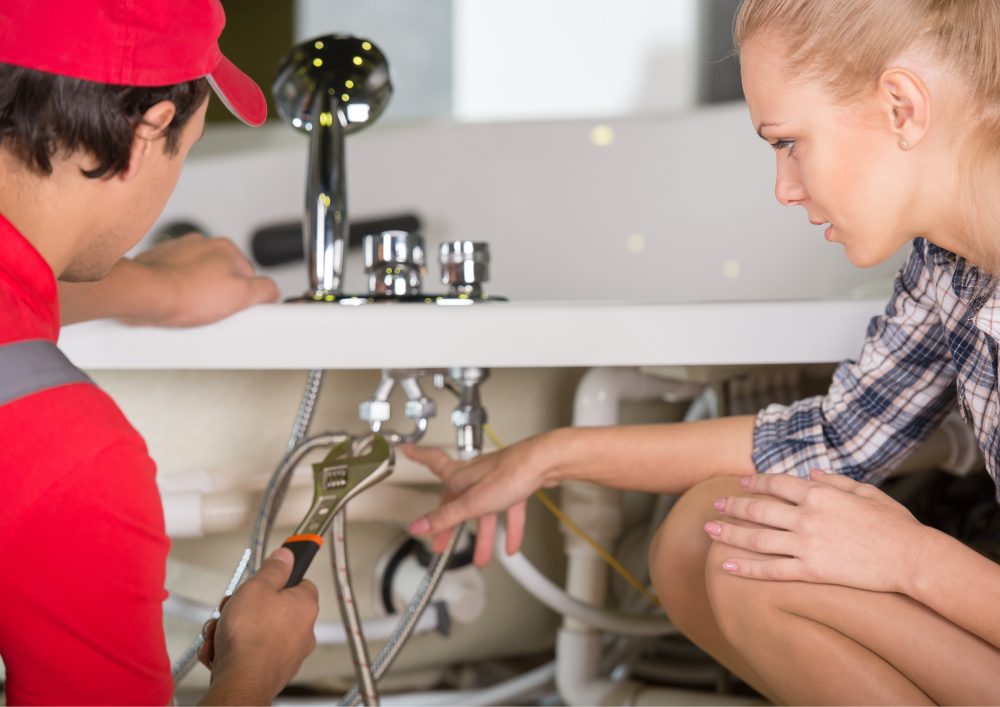
Some plumbing issues require a professional’s touch, even with regular maintenance and quick fixes. Knowing when to call a pro can save time and prevent small problems from becoming major.
Recurring Issues
If the same problem keeps coming back, it’s a sign you need to call a professional. For example, a recurring clogged drain could indicate a deeper blockage that’s not easily reachable.
A pro can use advanced techniques like camera inspections to identify the root cause in such cases. They can then employ the right tools to fully clear the blockage, ensuring the issue won’t return shortly.
Major Leaks
A significant leak is a plumbing emergency that needs immediate professional attention. Such leaks can occur in various areas, from your water heater to pipes within your walls. A major leak is not just about water wastage; it can also cause significant water damage, including potential structural problems in your home.
Professionals can quickly locate the source of the leak and repair it efficiently. They can also assess the extent of any damage and advise on additional repairs or preventative measures.
Sewage Backup
A sewage backup is a health hazard and a significant disruption to your daily life. If you experience a backup, you must call a professional immediately. They have specialized equipment to handle the waste material safely and thoroughly cleanse the affected areas.
They can also determine the cause, whether it’s a blockage, a broken sewer line, or a problem with the municipal lines. After resolving the immediate issue, they can advise preventing future backups, including installing backwater valves or regular sewer line maintenance.
Renovation or Installation
Home renovations or installations involving plumbing are not the time for DIY efforts. Whether you’re remodelling a bathroom or installing a new dishwasher, a professional ensures everything is up to code.
They can provide insights on the best materials and the most efficient way to configure your plumbing system. A pro can also foresee and prevent issues that may not be obvious to a layperson. It includes proper pipe placement, drainage slopes, and fixture installations, helping you avoid future headaches.
Gas Line Issues
Any issue involving gas lines is a serious safety concern. Never try to handle it on your own. Call a professional immediately if you smell gas or are installing a gas-powered appliance. They have specialized training to handle gas line issues safely.
They can detect leaks, safely seal off areas, and repair or install lines under stringent safety protocols. Gas-related issues are dangerous and subject to strict regulations, making a professional’s expertise essential.
Emergency Situations
Emergencies like a burst pipe or flooding require immediate professional intervention. These situations can lead to significant water damage and electrical issues and even pose health risks due to potential contamination.
The faster you act, the less damage you’ll experience. Professionals can quickly identify the issue and take immediate steps to minimize damage. They have specialized equipment for water extraction and damage repair. Professional plumbers can also offer expert advice on any vital steps needed to return your home to a safe and livable condition.
Conclusion
Mastering home plumbing doesn’t mean doing everything yourself. It means knowing how to maintain your system, recognizing signs of trouble, and understanding when to call a professional.
Being informed can save you time, money, and stress from regular maintenance to emergencies. With the right tools, guidelines, and professional help when needed, you can keep your home plumbing in top condition.








